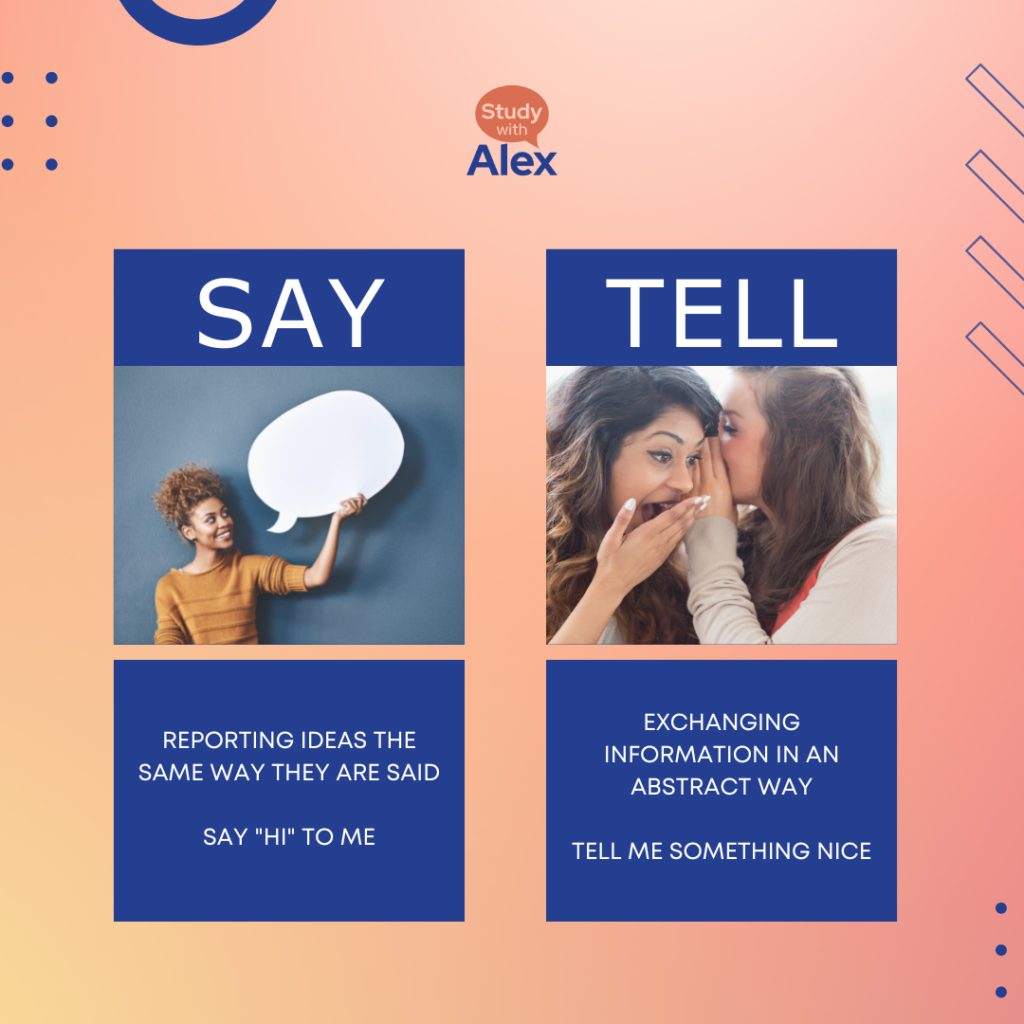The verbs about speaking and quoting are one of the hardest for speakers of some languages. These words are either obvious to you, or they make no sense. Whether you use say or tell is so obvious to learners, but the difference is subtle. However, you need to be careful because if you misuse them, natives will definitely notice. No pressure!
How do we know if it’s say or tell or talk or speak.
Say is for reporting ideas in the same way they were said
This can be confusing because you will use this for direct quotes, indirect quotes, and some simplification of exact words.
She said that she cannot go.
= The original words were probably “I cannot go”. Here is the conversion of those words into my sentence.
I said to him, “stop bothering me.”
= My words were exactly “stop bothering me.” The person who heard my words was that man.
Notice how you CAN add the person who received the words. It is optional.
He said my favorite three words.
= His words are unknown. Possibly “I love you,” “Let’s go now,” “Here’s some cake,” etc. However, we know he said 3 words exactly.
The recipient of information is not necessary with this word, but it is possible with “to.”
Tell is for exchanging information in an abstract way
The key difference in meaning is that it is not common to give direct or indirect quotes with this verb. The information gets abstracted to a huge degree. “I have so much homework to do, so I cannot come.” can become “why I was busy.” The first example below will use this.
The key grammatical difference is that, in 99% of uses, we also need a recipient. Who is getting this information? That is the direct object.
I told him why I was busy.
= My words were “I have so much homework to do, so I cannot come.” and “him” is the person who listened to me.
Magicians never tell their secrets to anyone.
= Magicians never use these words: “this is how I did this magic trick.” This quote is simplified to “secrets.”
He told me where to find the car keys over the phone.
= During a phone call, I listened to his words, which were something like “Check the table for your car keys.”

Talk is for having a conversation or discussion
This word is not about giving or receiving information. This is just about two people having a conversation.
He talks too fast.
= His words are too fast.
I talked to him last week.
= We had a conversation last week.
You should talk to your parents about this.
= You should have a conversation with your parents about this.
Speak is for having the ability to communicate verbally
This word is only about the ability communication. Usually, this verb does not have an object. When it does have an object, 99% of the time, it is a language like English, French, or Japanese.
Most deaf people cannot speak and only use sign language.
= Deaf people usually do not make words with their mouth and voice. They use sign language.
She speaks with a French accent.
= Her words sound like French.
I’ve spoken at many medical conferences before.
= I gave many speeches for doctors.
Summary
- say: exact information or converting information to simple terms
- tell: information but abstract
- talk: conversation
- speak: the ability to use language
Say or tell are the most problematic pair, but talk or speak can cause problems, too.
Even if you knew how to use these words, it’s good to review it and analyze why we use the words we speak. Once we understand the rule that we use automatically, we can make sure that we can communicate effectively with everyone. Using say or tell can seem simple, but misusing them can make you seem like a beginner. Hopefully, you have the knowledge to use these properly.
If you want more English explanations, there’s many more on this blog.
My personal language journey may be helpful for you, which you can check out on my YouTube channel.
Good luck with telling people what you say!